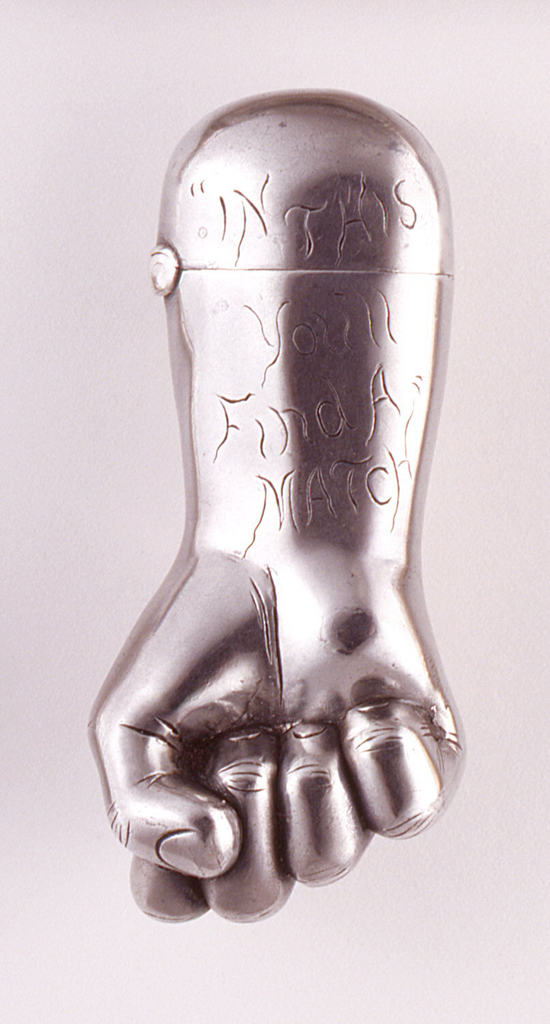Matches seem almost trivial to us in 2014. However, carrying matches was once a novelty and feat of man’s ability to harness instantaneous fire. Gas-powered lighters and safety matches in matchboxes were not available on a wide scale until the 1930s. Wooden friction matches were first invented about a hundred years earlier, but were fickle and extremely combustible. Matchsafes were the solution to carry matches safely: to protect them from moisture and to hinder them from lighting involuntarily by reducing added friction.
Matchsafes came in many shapes and sizes depending on the intended use. Some were hung on walls, while others were made to stand alone on tabletops, and generally used by women. This portable pocket matchsafe was of a type intended to be used by men, to light a cigar, cigarette, or pipe on the go. It is likely that this matchsafe belonged to a man, as it was made before the turn of the twentieth century when it would be considered highly inappropriate for women to smoke in public.
Aside from the practical function of matchsafes, many have a decorative quality, which is arguably what makes them so appealing. This silver matchsafe was not executed as a simple rectangular box to merely hold matches. This container with a hinged lid is in the form of a clinched fist and forearm with the whimsically engraved inscription: “In This You’ll Find A Match.” A matchsafe like this would have been used as a conversation piece, and for personal entertainment. It is an example of matchsafes that use rebuses and other word or picture puzzles based around the word “match.” The clenched fist dissuades any stray finger from carrying out the invitation suggested by the inscription.
So next time you see a free hotel matchbox, you can use it as conversation piece about the disappearance of matchsafes. What was once an everyday accessory is now a treasured relic. Yet, we’re still being asked: “Do you have a light?”
Gabrielle Golenda is a graduate student at Parsons the New School for Design in the History of Decorative Arts and Design program, focusing on film and modern design. She has previously worked in fashion as a stylist assistant and in PR at Tom Ford.
